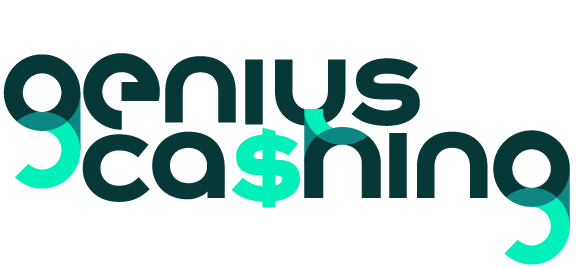Why Fast Scaling Often Ends in a Financial Black Hole

Fast Scaling Often Ends in a Financial Black Hole, a stark truth the venture capital world is confronting with renewed sobriety in 2025.
Anúncios
The intoxicating promise of hyper-growth the “grow at all costs” mentality frequently masks fundamental structural flaws, turning massive capital raises into an acceleration toward insolvency.
Many founders, seduced by billion-dollar valuations and rapid customer acquisition, fail to realize they are merely building a bigger ship with a gaping hole below the waterline.
The core issue isn’t the growth itself but the quality of that growth. Uncontrolled expansion places immense, invisible strain on a company’s financial and operational infrastructure, far exceeding the visible gains in revenue or user numbers.
This phenomenon, where rapid top-line growth creates proportional or even disproportionate cash burn, defines the financial black hole.
Anúncios
The momentum generated by significant funding rounds becomes a destructive force, accelerating the depletion of working capital.
How Does Uncontrolled Cash Burn Create a Financial Black Hole?
What Are the Hidden Costs of Aggressive Customer Acquisition?
Aggressive scaling typically relies on a massive influx of marketing and sales spend to acquire customers faster than the competition. These high-octane campaigns dramatically inflate the Customer Acquisition Cost (CAC).
If a company is scaling too fast, it risks acquiring “bad customers” who churn quickly or require disproportionately high service costs, making the lifetime value (LTV) negligible.
This misallocation of capital represents the first stage of the black hole. Simply put, you cannot outrun a flawed LTV-to-CAC ratio, no matter how much venture capital you raise.
The true cost of hyper-growth is often revealed only after the initial funding excitement fades and profitability becomes the metric of scrutiny.
Many scaling companies mistakenly view high CAC as a temporary necessity, but if the product-market fit is even slightly off, every new customer acquired accelerates the financial deficit.
The pressure to continually demonstrate explosive growth for the next funding round forces founders into a vicious cycle.
They must keep spending to inflate user numbers, thereby worsening their underlying unit economics.
This reliance on external funding to mask operational inefficiency is a classic symptom of why Fast Scaling Often Ends in a Financial Black Hole.
++ Budget Hacks to Keep a Failing Business From Collapsing
Why Do Operational Inefficiencies Escalate with Rapid Expansion?
Rapid scaling demands internal systems to absorb massive shocks from tripling the employee count to integrating new software globally yet most startups lack the necessary operational maturity.
The processes that worked for a team of 30 simply collapse when the team hits 300, leading to a cascade of expensive errors.
These inefficiencies include fragmented communication, delayed invoicing, and mismanaged supply chains, all of which erode profit margins invisibly.
The rapid hiring surge is a particularly costly area. Desperation to fill seats leads to poor hiring decisions, high employee turnover, and expensive redundancy.
Hiring ahead of the actual revenue curve a speculative move often encouraged by investors can drain the capital reserves faster than any marketing campaign.
Headcount is a fixed, concrete cost; promised future revenue is still speculative “fog,” as one venture capitalist aptly described it.

What Financial Controls Are Often Sacrificed in the Pursuit of Speed?
Why Do Founders Neglect Working Capital Management?
In the breathless pursuit of market dominance, founders often treat cash flow as a secondary concern, assuming new funding rounds will always compensate for shortfalls.
This neglect of working capital management the difference between current assets and current liabilities is a critical failure point.
A company can show strong revenue but still run out of cash if its accounts receivable are slow or its inventory turnover is mismanaged.
Consider the complexity of scaling international operations. Fast expansion into new territories requires upfront investment in infrastructure, local compliance, and talent.
Read more: Budget deficit vs fiscal deficit difference
If the company is paying suppliers and staff in 30 days but only collecting revenue from new international clients in 90 days, the cash flow gap widens into a chasm.
This disparity is a predictable financial hazard that is frequently overlooked in the hype of a new market launch.
The financial reality is that growth consumes cash before it generates profits. Without a meticulous focus on minimizing the cash conversion cycle, the company’s growth acts like a vacuum cleaner, rapidly sucking liquidity from the balance sheet.
This is the mechanism by which Fast Scaling Often Ends in a Financial Black Hole, irrespective of the total funding raised.
Also read: Overlooked Expenses That Quietly Cause Financial Deficits
The Inventory and Supply Chain Trap
Take the case of a rapidly scaling e-commerce fulfillment company (let’s call it “Globex Logistics,” a fictional but original example based on real-world patterns).
Driven by a massive funding round, Globex expanded its fulfillment centers from 5 to 50 in 18 months to meet projected demand. However, the aggressive growth led to:
- Massive Inventory Bloat: Buying inventory too optimistically for new centers, resulting in high holding costs and eventual write-offs.
- Strained Supplier Credit: Rapid demand outpaced established payment terms, forcing them to pay suppliers earlier to secure capacity, effectively reducing payable days from 60 to 30.
- Customer Payment Delays: The new, less-vetted B2B clients were slower to pay, extending receivable days from 30 to 75.
Globex’s revenue tripled, but their cash conversion cycle inverted from a positive 30 days to a crippling negative 120 days.
Despite strong headlines, the company faced a liquidity crisis and had to raise a devastatingly expensive emergency debt round, effectively selling their future at a discount.
| Financial Metric | Pre-Scaling (Year 1) | Post-Scaling (Year 3) | Impact on Cash Flow |
| Annual Revenue Growth | 50% | 300% | Positive (Headline Success) |
| Customer Acquisition Cost (CAC) | $50 | $180 | Negative (Increased Marketing Spend) |
| Gross Margin | 55% | 40% | Negative (Price War/Operational Errors) |
| Cash Conversion Cycle | 30 Days (Positive) | -120 Days (Negative) | Extreme Negative (The Black Hole Effect) |
The Cash-out Statistic
According to a 2024 analysis by CB Insights on startup failures, 29% of startups fail because they run out of cash, making it the second most common reason after lack of market need.
Crucially, within the cohort of venture-backed firms that raised over $50 million and failed, nearly 45% cited “unsustainable cash burn rate” or “failure to meet internal runway projections” as the primary catalyst for their final collapse.
This real-world evidence confirms that for heavily funded, fast-scaling companies, the black hole is the most prevalent execution risk.
Why Should Founders Focus on Sustainable Unit Economics Over Valuation?

What is the Analogical Difference Between Speed and Velocity in Business?
Imagine the scaling company as a race car. Speed (the rate of revenue growth) is visually exciting and attracts the crowds (investors).
Velocity, however, is a vector it requires both speed and direction (profitability). Many companies achieve enormous speed, burning fuel (cash) at a ridiculous rate, but have zero velocity because their direction (the ultimate destination of self-sustainability) is incorrect.
They’re going fast, but they’re heading straight into the wall. Focusing on velocity means aligning every spending decision with the path to positive unit economics.
Why is Product-Market Fit Under Hyper-Growth a Danger?
Product-market fit (PMF) is not a static milestone; it is a dynamic state. When a company scales too fast, it outgrows its original PMF.
The product that delighted the first 1,000 users might not work for the next 100,000, particularly if the initial segment was niche or high-value.
Rushing development to meet scale demands often results in a diluted, bug-ridden product that fails to satisfy the core needs of the rapidly expanding new audience.
The company ends up spending massively to acquire customers for a product that is, quite literally, breaking under the strain of its own popularity.
This structural failure to maintain PMF at scale is a classic way to ensure Fast Scaling Often Ends in a Financial Black Hole. Instead of solidifying their user base, they alienate it at an industrial scale, leaving a trail of expensive churn.
Conclusion: Mastering the Gravity of Finance
The collapse inherent in the phrase Fast Scaling Often Ends in a Financial Black Hole serves as a vital warning sign for every entrepreneur and investor in 2025.
The seductive power of rapid expansion can obscure the subtle, yet devastating, erosion of cash reserves and operational efficiency.
The secret to sustainable success is not simply growth, but controlled, profitable growth achieving velocity, not just speed.
Building a durable company means prioritizing cash flow, optimizing the cash conversion cycle, and ensuring that every acquired customer is financially accretive over their lifetime.
The failure to establish these financial fundamentals is the single greatest risk to a hyper-growth venture.
Share your experience in the comments: Have you witnessed a company sacrifice financial health for the sake of speed, and what was the ultimate outcome?
Frequently Asked Questions (FAQ)
What is the “Cash Conversion Cycle” and why is it crucial for scaling?
The Cash Conversion Cycle (CCC) measures the time it takes for a company to convert its investments in inventory and resources into cash from sales.
A shorter or negative CCC (getting paid before paying suppliers) is ideal. Rapid scaling often extends the CCC into the negative (paying suppliers faster and waiting longer for customer payment), creating a critical cash crunch despite rising revenue.
How can a startup tell if its cash burn is “unsustainable”?
A cash burn is unsustainable if the “runway” (cash balance divided by net burn rate) is decreasing, and the company is not clearly trending toward positive unit economics within that runway period.
If the growth of operating expenses consistently outpaces the growth of gross profit, the burn rate is inherently unsustainable.
What is the primary difference between a “good” fast scale and a “bad” fast scale?
The primary difference lies in the unit economics. Good fast scale means every new customer adds more to the LTV than they cost to acquire (LTV/CAC > 3:1), and gross margins remain healthy.
Bad fast scale means growth is driven by heavy subsidization and high churn, leading to deteriorating unit economics and a rapidly shrinking runway.
